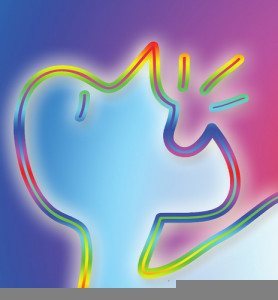Effective communication is like driving a vehicle. To begin we need to identify what is effective communication. Once we can provide a definition, we can then seek to determine if our own communication style is effective. For those who are able to accept their communication can improve; we identify some approaches to enhance our communication style to avoid communication crashes.
What is effective communication?
Effective communication concerns all of us on a regular basis, whether in personal or professional life. Communication occurs to entertain; help people reach goals, and for a number of other purposes. Just as a car needs oil, people need to develop their conversational skills to communicate effectively. This is an important skill to develop as Connecting with people is a necessary skill to promote and improve yourself in your life (regarding work and socialising).
The reason communication occurs is to distribute information so that individuals can understand one another. With all the noise around us on an ongoing basis, it is easy to understand why messages come across unclear and potentially cause disruptions. Different problems may occur that may result in a crash or the disruption of the message prevention effective communication. Therefore, effective communication is a skill that everyone can appreciate.
Effective communication is a two-way street that consists of a feedback loop. One side of the street involves dispersing the message to the receiver. On the other side of the street, the receiver’s role is to accept the message and respond accordingly.
The message sender is the vehicle driver and has the authority to formulate the message for the listener. Once the individual sends the message, they are accountable for obeying the traffic signs, stop and yield to the receiver to acknowledge At this time, the receiver becomes the sender and has the right of way. In both instances, the tone and body language are the vehicle’s blinkers that help to provide a clue to the receiver.
Although tone and language play role in face-to-face communication, other types of communication exist such as telephone, pen and paper, as well as the Internet can limit tone and body language. Face- to-face communication is rich with contextual clues, making it ideal for effective communication to occur. Meanwhile, the telephone relies on vocal clues and removes visual context. Pen and paper depend on language using word choice. Therefore, it is imperative the careful consideration be given for the selection of words so the receiver can interpret the intention of the message. Internet communication can combine elements of in person communication and written communication depending on the mode or communication platform. Examples of Internet communication include email, texting, and Skype.
How do you know if communication is effective?
When driving vehicles, we may encounter weather conditions that make driving difficult. In the winter, drivers may face snow limiting their visibility. During the summer, roads may be slick from rain limiting vehicle traction. Likewise, effective communication is not easy and the environment may decrease one’s ability to receive messages and interpretation of the message. Therefore, we need to determine if our communication is effective.
The only way to keep your vehicle running at peak conditions is to take care of it and implement preventative medicine like changing the oil. Without regular vehicle checkups, there may be problems with our vehicle when we go to use it. Checkups are important to effective communication. Thus, when communicating the sender must assess understanding of the message by asking questions and soliciting feedback. Communication checkups help to remove guesswork that may cause future inefficiencies or ineffectiveness.
Another approach for leaders to conduct checkups is to create a simple and clear message. Periodically, people need to fill their car with gas. At times, it is crucial to step back and rephrase a message to provide clarity and the fuel necessary for the receiver to accept the message.
There are times when it is just as easy to walk to location, as it is to ride. Leaders must consider their mode of transportation for their message. Is face-to-face communication necessary? Will the receiver understand the message in writing?
Not everyone is in a position to be a vehicle mechanic. Leaders can improve their communication skills and should be open to advice, recommendations, and feedback. Listening helps people to build upon the ideas of others, so they can be more effective.
What are the barriers to effective communication?
When driving, we must follow the rules of the road. When communicating we need to follow the rules of the road to overcome the barrier to effective communication. The following thoughts will help you to be a better communicator.
There is No Right or Wrong to Effective Communication
When you are conversing with others, it is important not to point fingers when a communication crash occurs. Be accountable for your role in the interaction. It is advisable to focus on the message rather than the individual as it helps to avoid the blame game.
Be Approachable
When a crash occurs, both sides need to be open so that corrections can be made. When problems occur, people can become more excited than they would otherwise. These sensitive moments are easier when individuals are approachable.
Avoid Assumptions
Making assumptions can create problems that should have been preventable When communicating, be explicit and offer all the necessary information. Providing all the details will reduce the likelihood problems, and conflict will ensue.
Conclusion
Driving a vehicle provides an analogy for effective communication making it easy to remember. Everybody must care for their vehicle for it to run when it is wanted For this reason, we need to reflect on our communication style and try to identify methods for improvement. Making improvements require action and getting behind the wheel so that we can reflect on ways receiving our message can become easier. We need to regurlarly conduct communication checkups to ensure the listener receives the message. Communication tune-ups help to avoid communication crashes that are all too common because of the noise found in our environment. When we apply these tune-ups, we will find more success as leaders.


